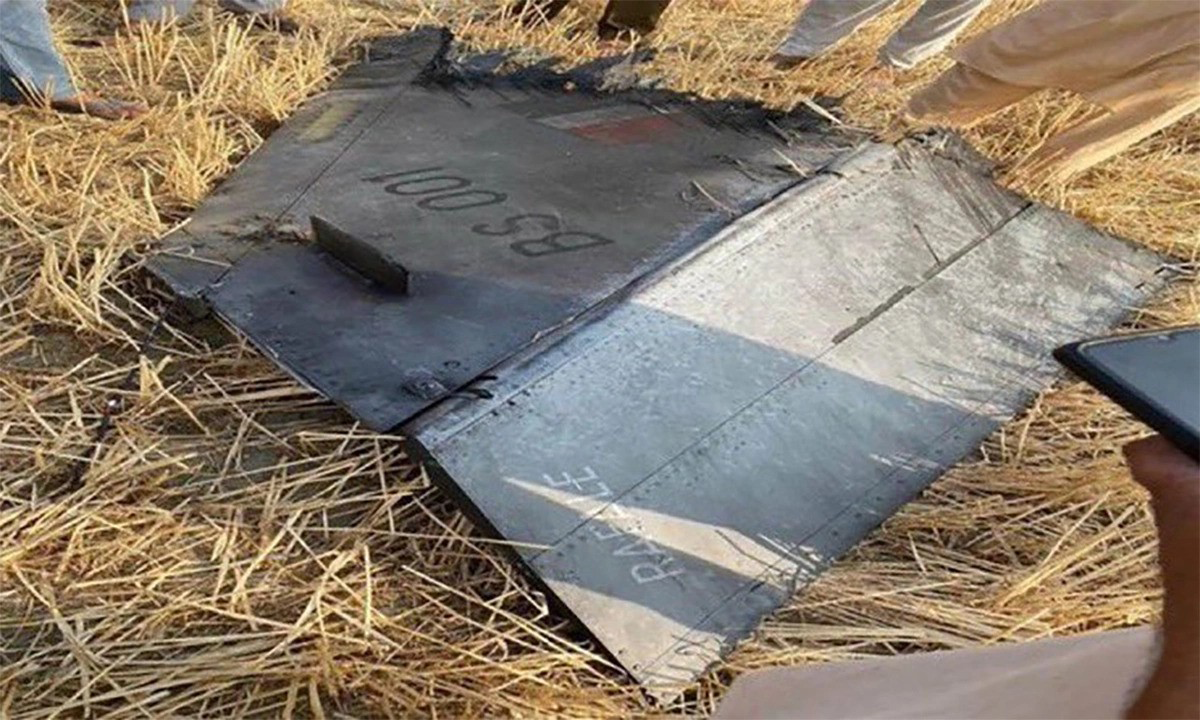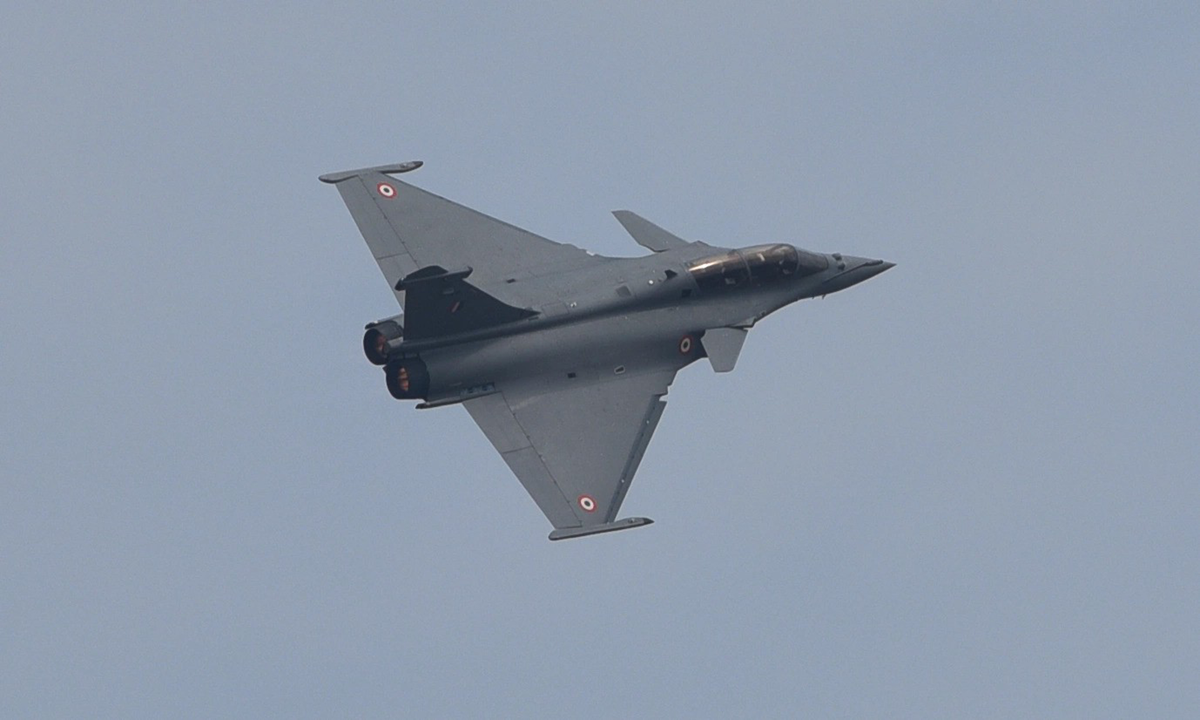Before dawn on 7/5, residents of Akalia Kalan village in northern India heard a series of explosions, followed by a fireball streaking overhead and crashing into a nearby field. The wreckage confirmed it was a fighter jet.
Villagers reported two bystanders were killed. The two pilots ejected and were later found injured.
This incident is believed to be one of several Indian fighter jets shot down during the brief conflict with its neighbor. The Pakistani military claimed to have downed a total of 6 Indian aircraft, including three modern French-made Rafale multirole fighters.
 |
Debris, believed to be the vertical stabilizer of an Indian Rafale fighter jet, in a photo released on 7/5. Photo: Aviation Week |
Debris, believed to be the vertical stabilizer of an Indian Rafale fighter jet, in a photo released on 7/5. Photo: Aviation Week
Foreign military officials believe India lost 5 aircraft, including at least one Rafale.
While Indian defense officials declined to confirm these figures, they admitted to losing some aircraft. They suggested operational errors, not technological inferiority, were the cause.
This admission is significant because China is Pakistan's primary arms supplier. The 4-day India-Pakistan conflict also marked the first time Chinese fighters and missiles directly confronted Western and Russian-made counterparts.
Initial data suggests that the Chinese-made J-10CE fighter and PL-15E air-to-air missile played a key role in Pakistan's success against Indian aircraft.
"India seems to have underestimated its opponent's weaponry. China may also have tilted the balance by providing Pakistan with real-time early warning and targeting data," Akalia Kalan wrote in the Economist.
However, India quickly regained the upper hand, suggesting the problem lay in its initial air force deployment.
In June, Indian media published a recording of Shiv Kumar, India's defense attache in Indonesia, stating that New Delhi suffered losses because political leaders "asked the military not to attack Pakistan's air defense network" on the first day of the conflict.
Instead, they targeted suspected militant camps within Pakistan. “After suffering losses, we changed tactics and targeted military installations," Kumar said.
In a late May interview, Indian army chief Anil Chauhan admitted the air force lost aircraft on the first day due to "tactical mistakes." He emphasized that New Delhi corrected these errors after two days, allowing fighter jets to strike deeper into Pakistani territory.
Satellite imagery shows Indian missiles penetrating Pakistan's air defenses and hitting several military bases, including key locations near Islamabad.
 |
Indian Air Force Rafale fighter jets during a 2023 exercise. Photo: AFP |
Indian Air Force Rafale fighter jets during a 2023 exercise. Photo: AFP
Kumar's statement aligns with India's approach in past conflicts with Pakistan, where it has tended to avoid escalation. "However, New Delhi failed to account for Islamabad's recently improved military capabilities," Kalan said.
One theory among foreign military observers is that India didn't equip its Rafale jets with the long-range Meteor missile (range: approximately 200 km) on the first day. The Indian Air Force seemingly believed its aircraft were beyond the reach of Pakistani missiles, or that Islamabad's response would be restrained.
Another theory is that Indian fighters lacked appropriate electronic countermeasures, updated software, and data needed to protect them against Pakistan's modern weaponry.
Experts consider the PL-15 among the world's most advanced air-to-air missiles, rivaling the American AIM-120 AMRAAM and the Russian R-77. The PL-15E variant exported to Pakistan has a maximum range of 145 km, while the Chinese domestic version can reportedly hit targets at 200-300 km.
A third theory suggests the Indian Air Force lacked the necessary mission data to understand Pakistan's operational intentions, leading to complacency and slow reactions.
This incident could impact India's largest defense deal in years. The country is set to open bids for 114 new fighter jets this year, with Rafale manufacturer Dassault among the leading contenders.
However, some Indian officials believe the Rafale underperformed in recent conflicts. Others complain that Dassault hasn't shared the Rafale's source code, preventing India from customizing the aircraft.
 |
Pakistani J-10CE fighters perform at an Islamabad parade in March. Photo: AFP |
Pakistani J-10CE fighters perform at an Islamabad parade in March. Photo: AFP
Chinese diplomats have reportedly disparaged the Rafale to potential buyers, urging them to purchase Chinese-made fighters instead.
The French government is also under pressure to explain the loss of Indian Rafales, marking the first time the fighter has been shot down in combat. French parliamentarian Marc Chavent expressed concern in late May that the Rafale's SPECTRA electronic warfare system failed to detect and jam the PL-15E missile.
Dassault wants to reassure current and potential customers but is hesitant to speak freely, fearing it might anger India. The company only maintains that reports of three Rafales being downed are false and that the Rafale is "superior to anything China possesses."
Pham Giang (Economist)












